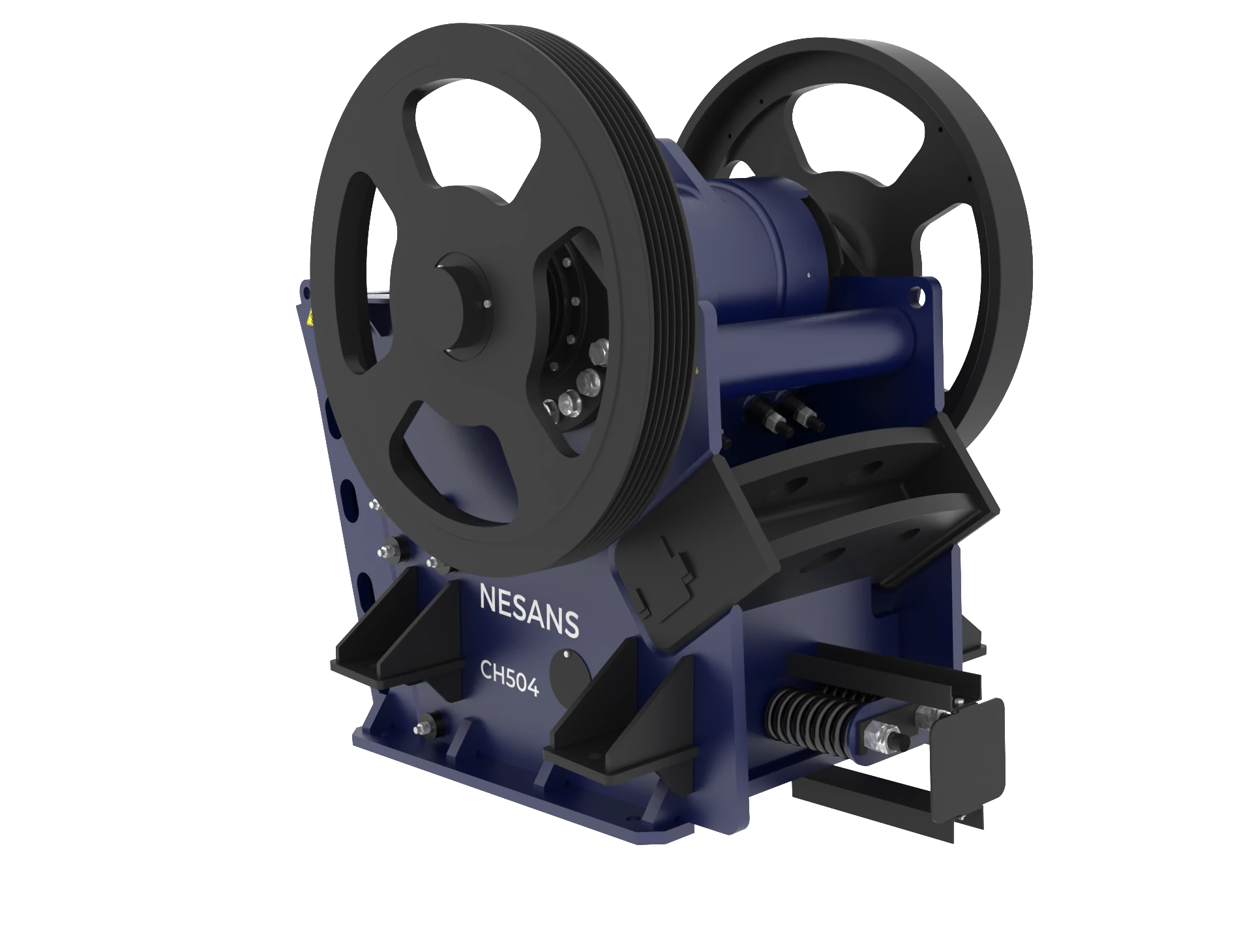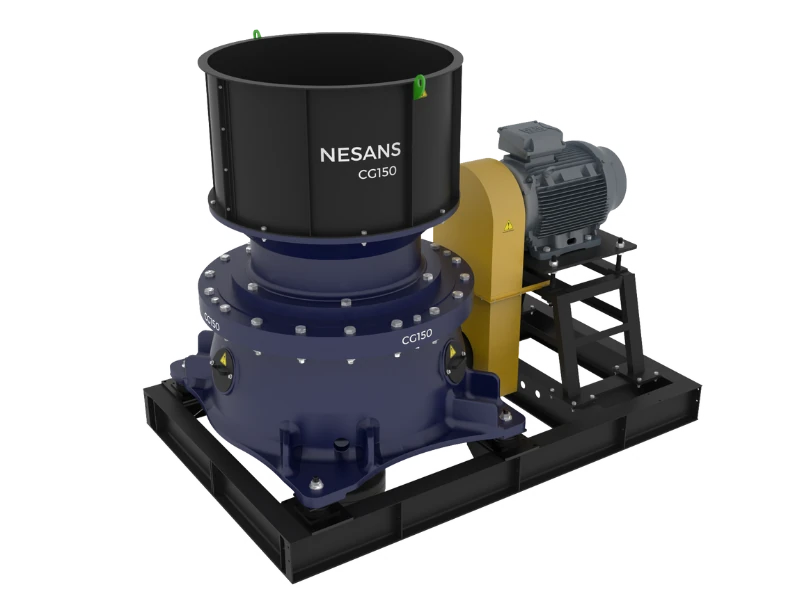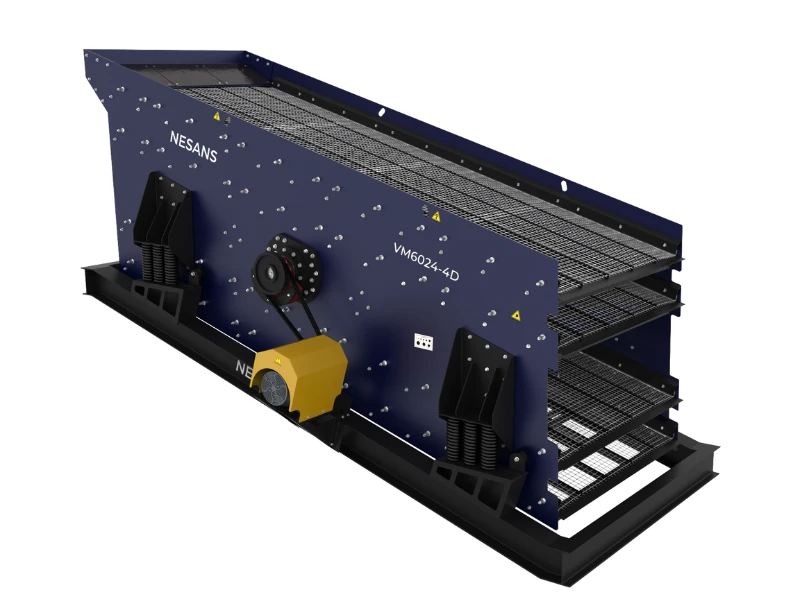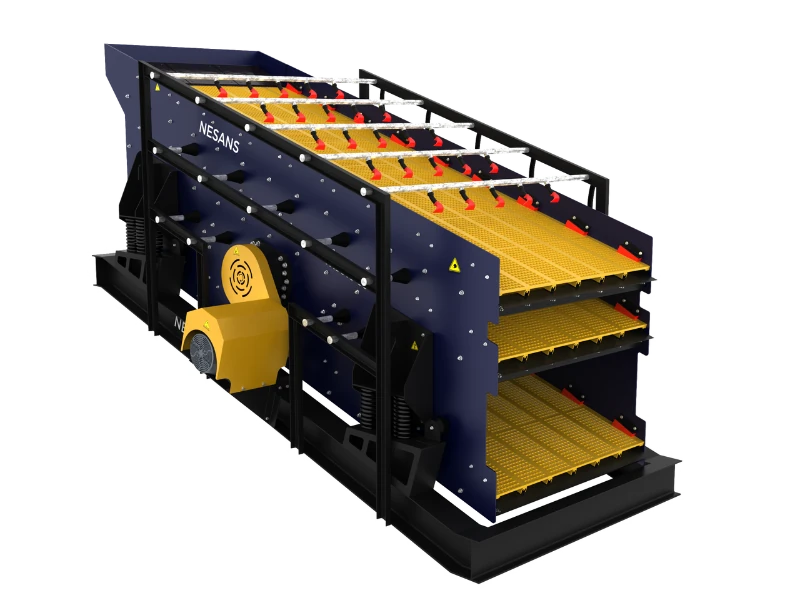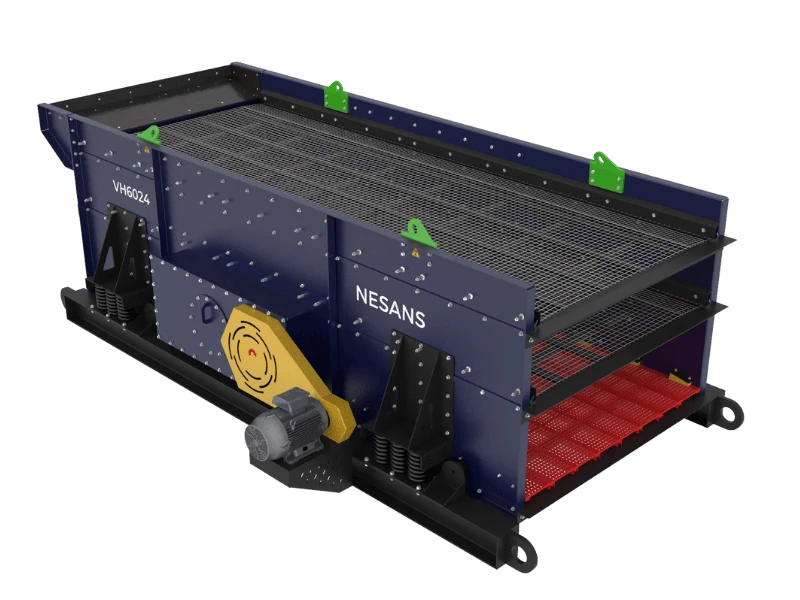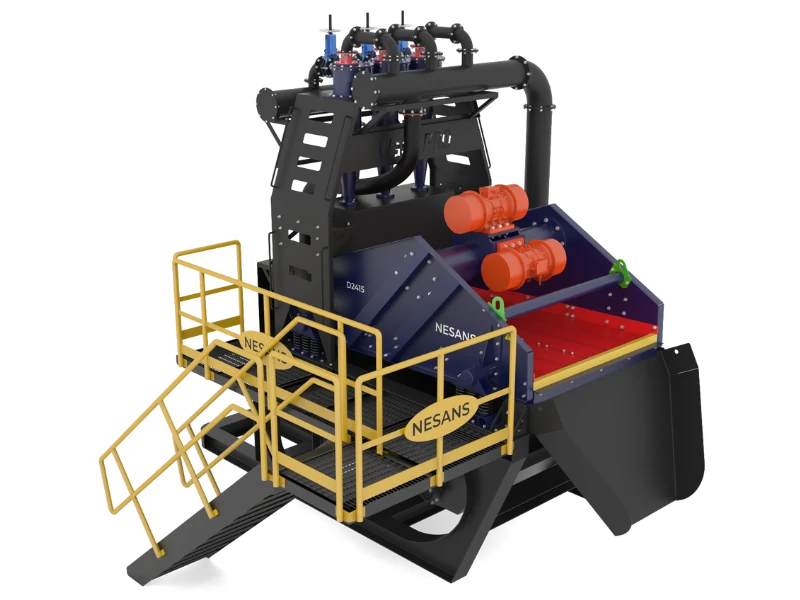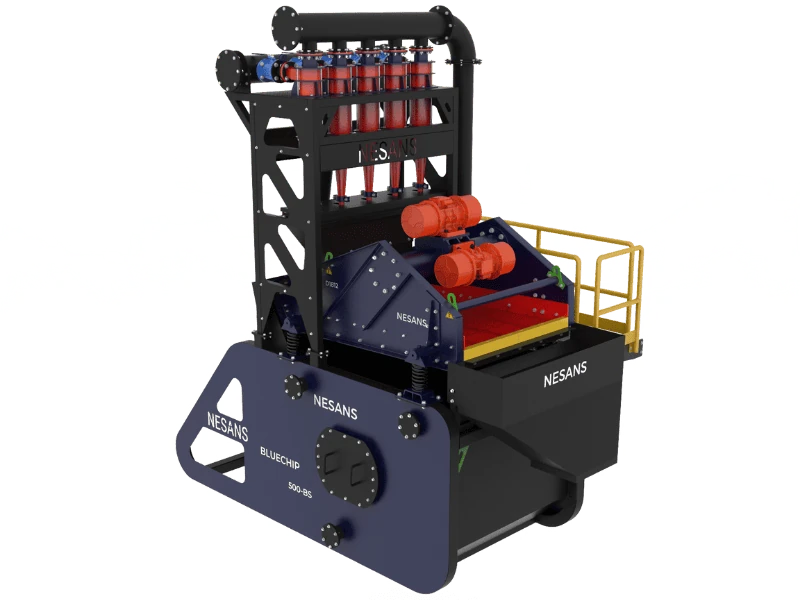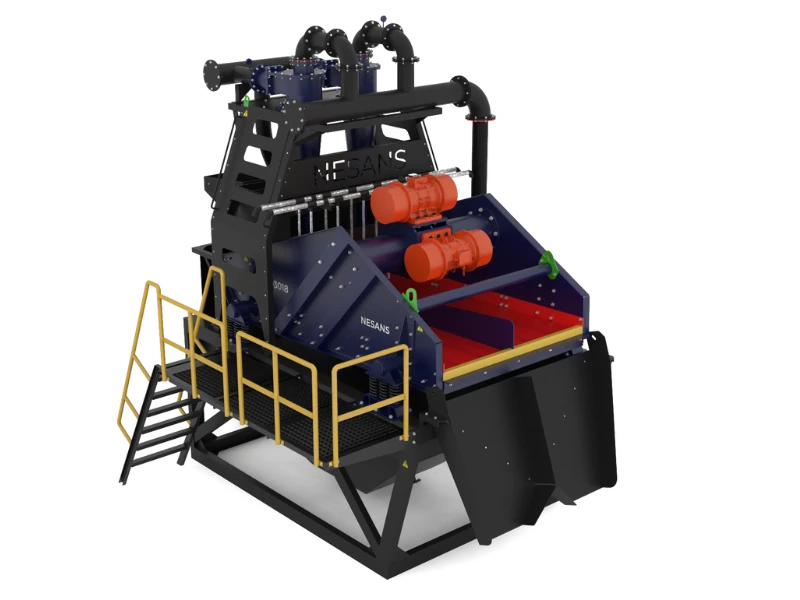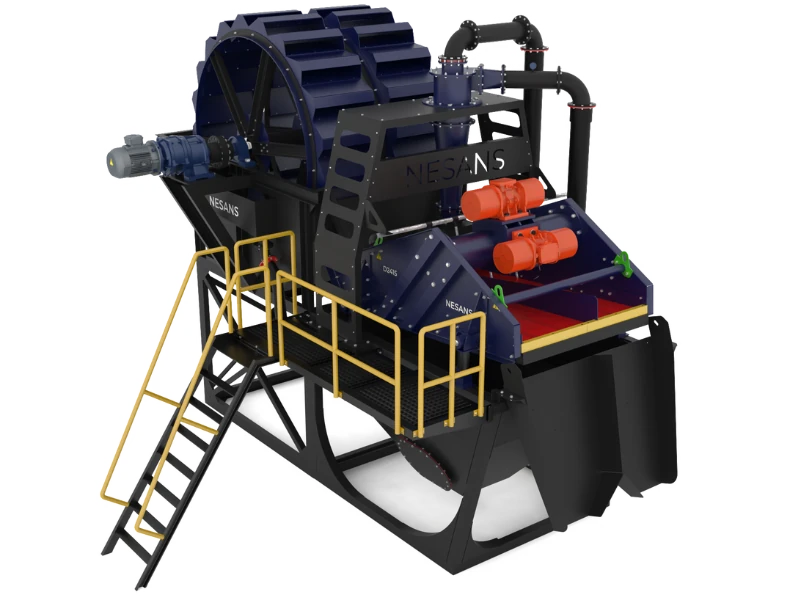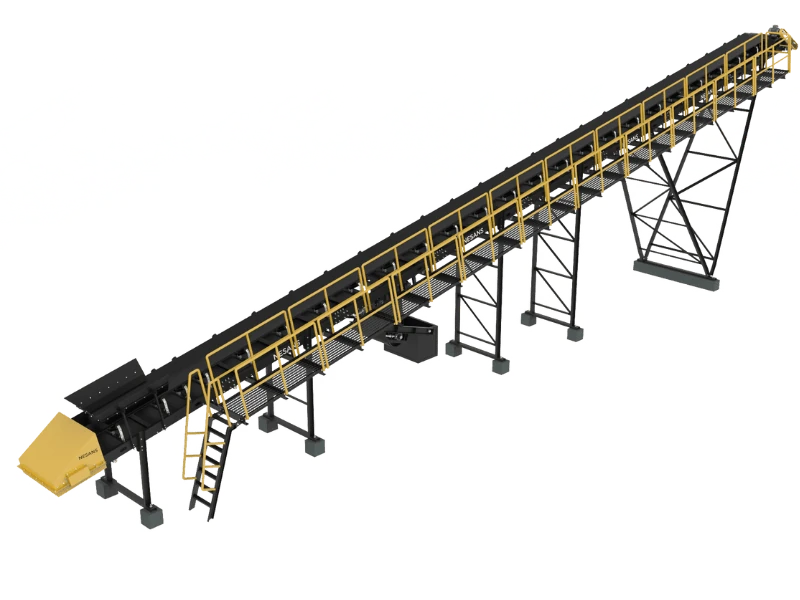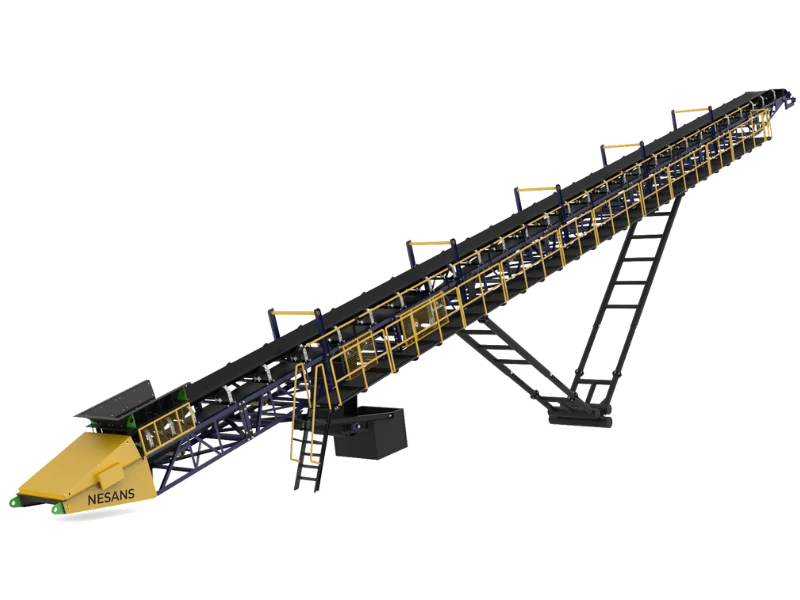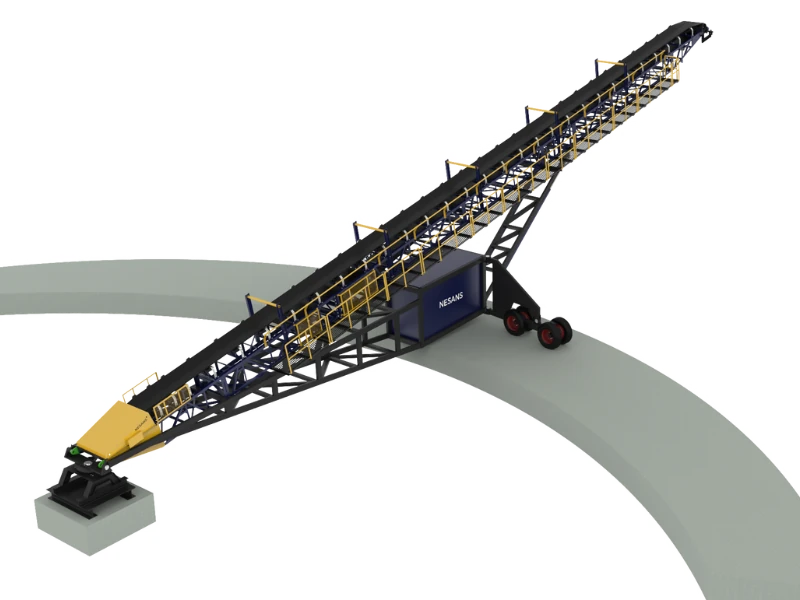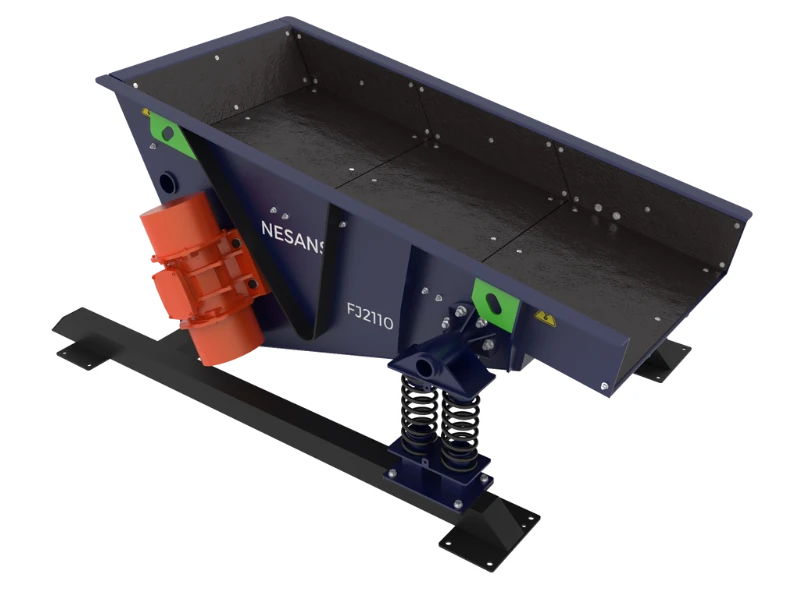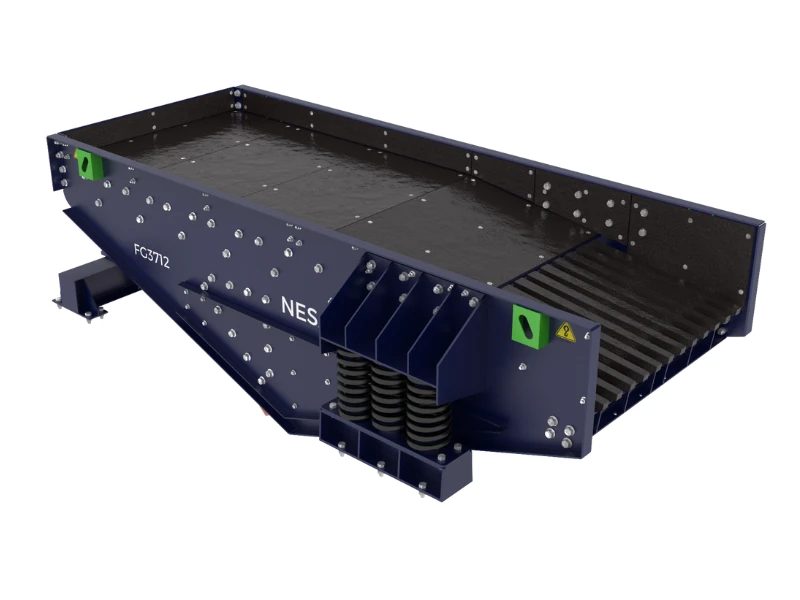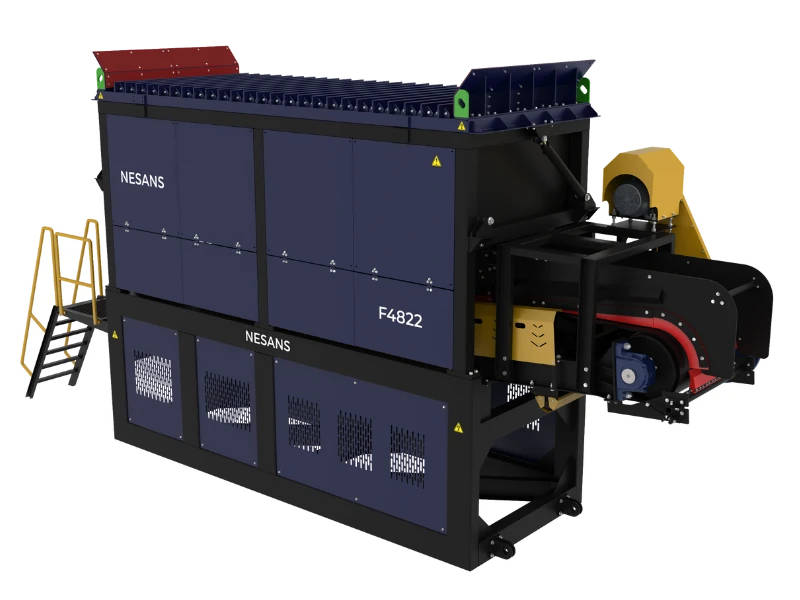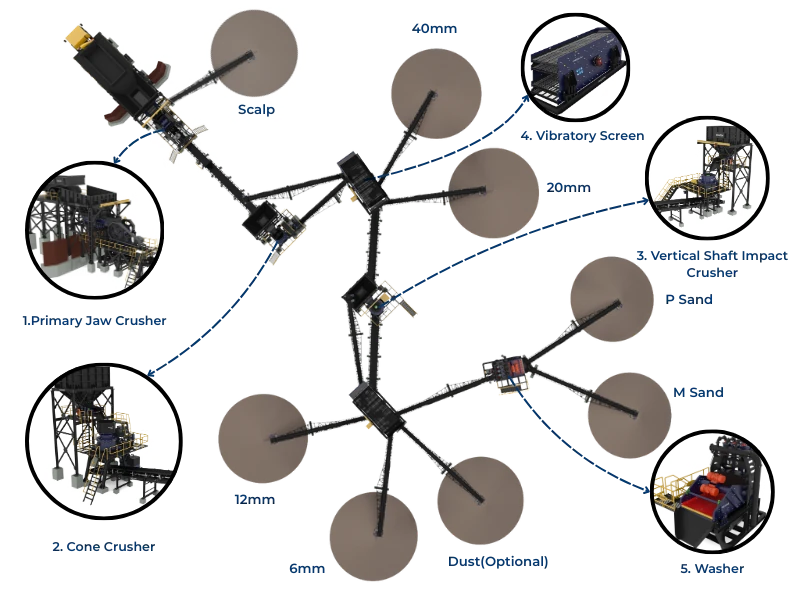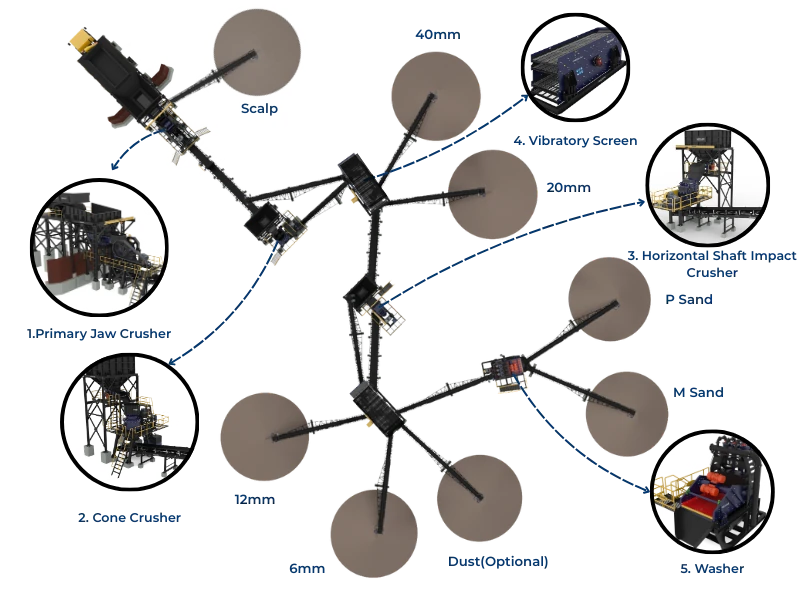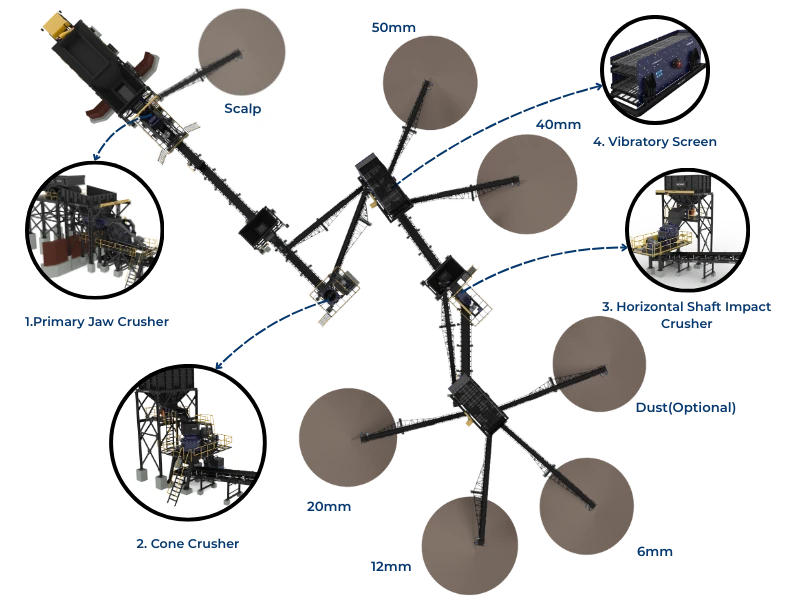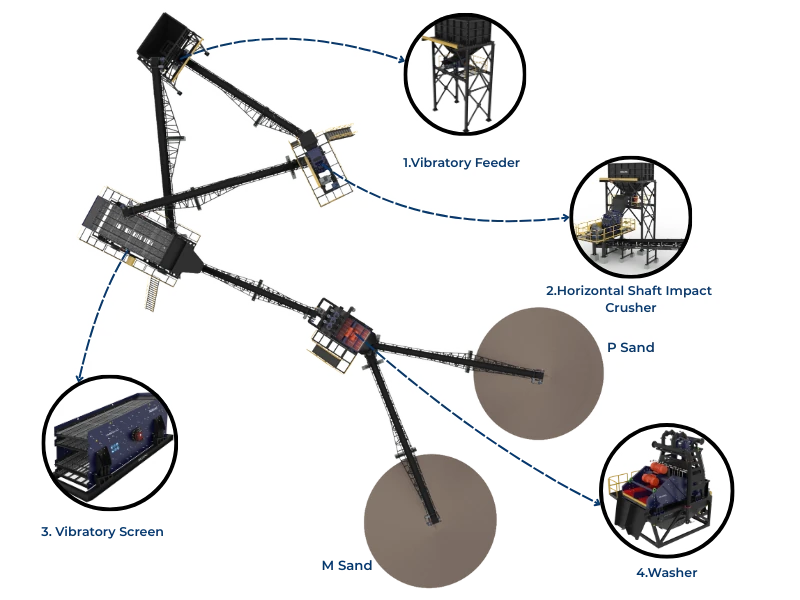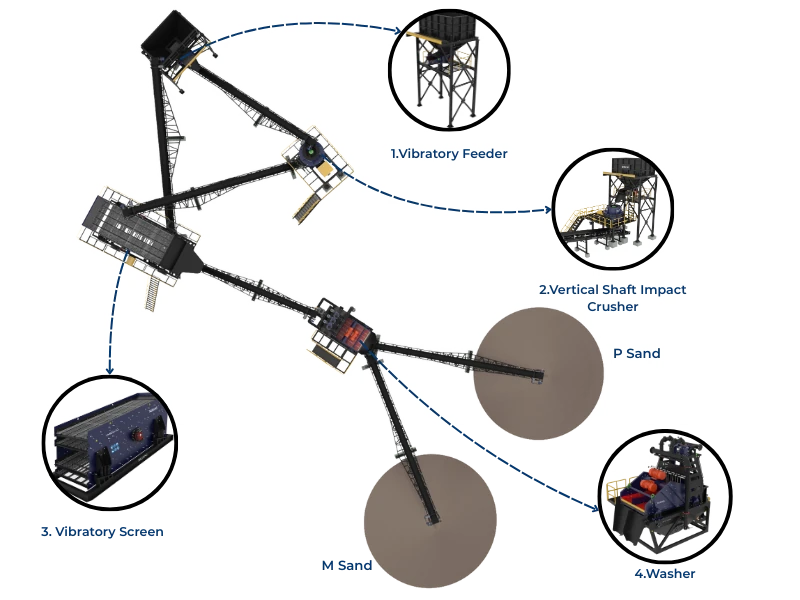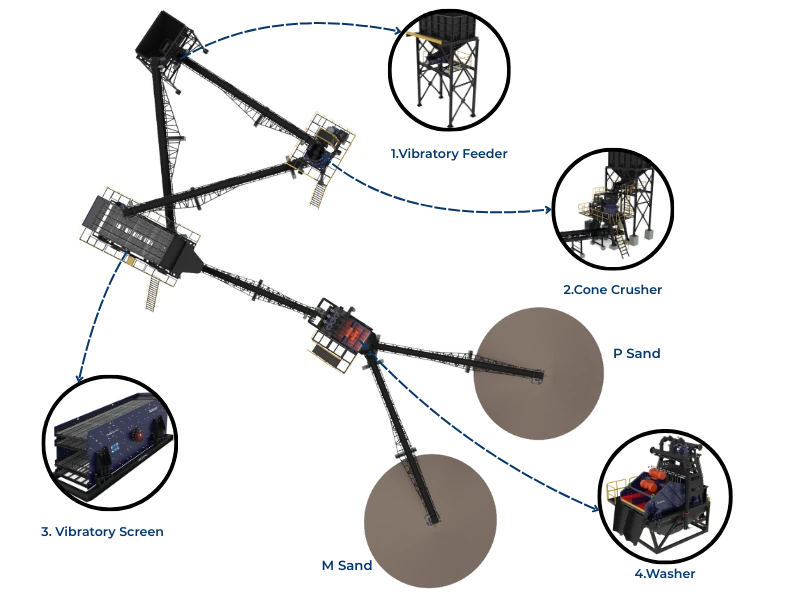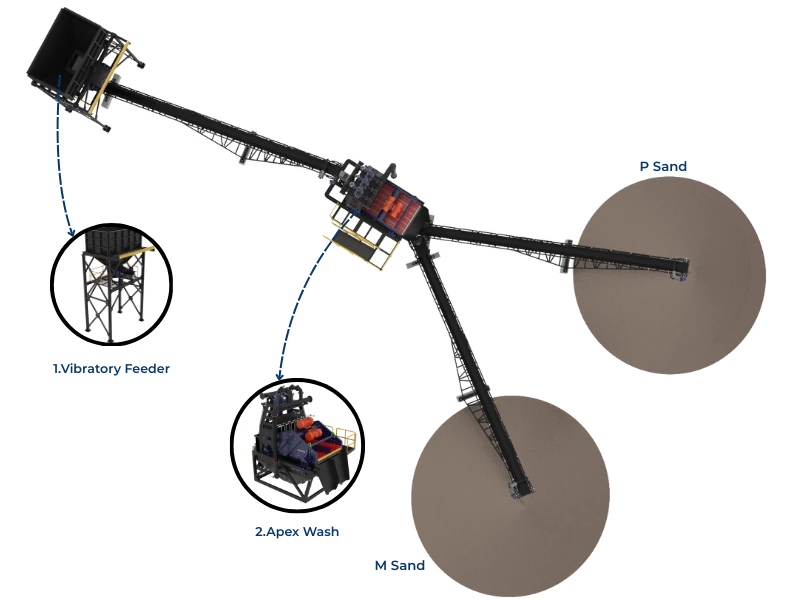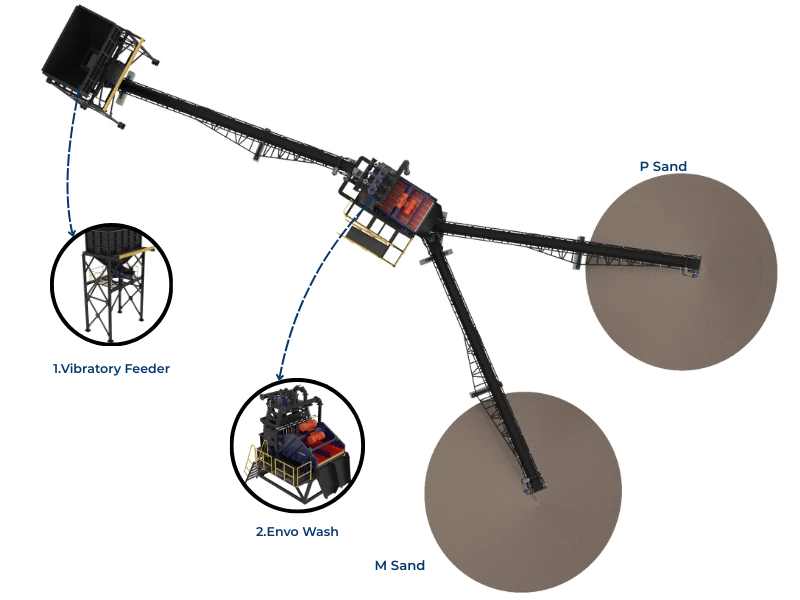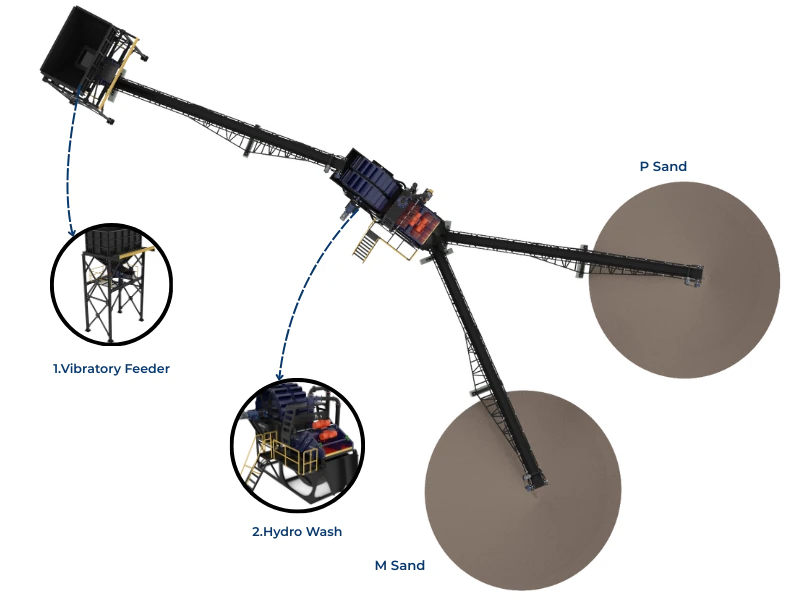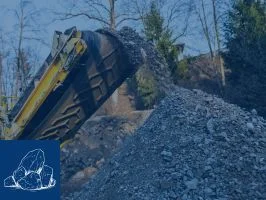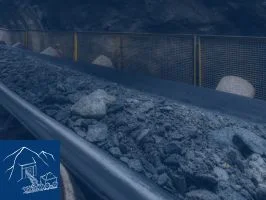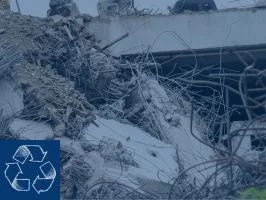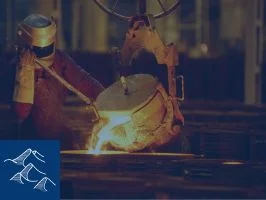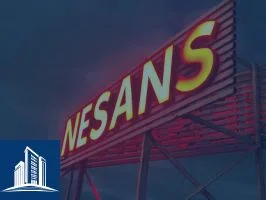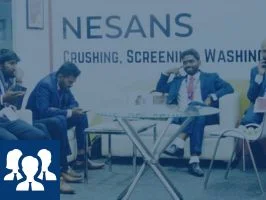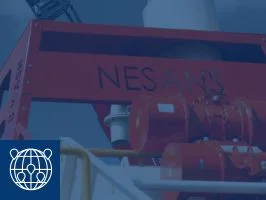Your cone crusher liners are scheduled for replacement every 2,000 hours based on OEM recommendations, yet inspection reveals 25-30% remaining life—costing you ₹8.5 lakhs in premature replacements annually. Conversely, delayed replacement causes 15-18% throughput loss and produces 40% more oversize material in the final week before failure. The solution isn't following fixed schedules—it's implementing predictive monitoring that tracks actual wear rates, enabling replacement at optimal timing that reduces costs by 35% while preventing unplanned shutdowns.
Crusher liner life varies dramatically based on feed characteristics, operating conditions, and material abrasiveness. A jaw crusher processing granite may consume liners in 800-1,200 hours, while the same equipment on limestone achieves 2,500-3,500 hours. Cone crusher manganese liners show similar variation, with mantle life ranging from 1,500 hours (hard quartzite) to 4,000+ hours (soft limestone). Yet most plants operate on fixed replacement schedules that ignore actual wear conditions—resulting in either premature replacement (wasting 20-35% of liner life) or delayed replacement (causing throughput loss, quality degradation, and catastrophic failure risk).
This guide examines predictive monitoring techniques that measure actual liner wear, optimize replacement timing, and reduce total liner costs by 30-40% while maintaining consistent production quality and preventing unplanned shutdowns.
Understanding Liner Wear Patterns and Failure Modes
Wear Mechanisms in Crushing Liners
Crusher liners fail through multiple mechanisms that progress at different rates depending on material characteristics and operating conditions:
Abrasive Wear (Primary Mechanism - 70-85% of liner consumption):
- Hard mineral particles (quartz, feldspar) with Mohs hardness 6-7 erode manganese steel liner surfaces
- Wear rate proportional to silica content and particle angularity
- Gradual, predictable progression—ideal for monitoring and prediction
- Creates smooth, polished wear surfaces with 1-3mm/month metal loss in typical applications
- Wear rate equation: W = K × (H/M)² × P × V where W=wear rate, K=material constant, H=particle hardness, M=liner hardness, P=contact pressure, V=sliding velocity
Impact Wear (10-20% of consumption):
- High-velocity particle impacts create localized plastic deformation and micro-cracking
- Concentrated at feed entry points and high-impact zones
- Accelerates in applications with high drop height or large feed size
- Creates roughened, rippled surface texture with 2-5mm local depressions
Fatigue Cracking (5-10% of failures):
- Cyclic loading causes subsurface crack initiation and propagation
- Manifests as surface checking, spalling, or catastrophic fracture
- Risk increases with liner age—cracks propagate exponentially in final 20% of life
- Temperature cycling accelerates fatigue in high-tonnage applications
⚠️ Cost Impact Example: A 300 TPH cone crusher with ₹4.5 lakh liner set replaced every 2,000 hours (333 TPH×hr life) costs ₹13.50/1,000 tons. Extending replacement to 2,600 hours (433 TPH×hr) through predictive monitoring reduces cost to ₹10.40/1,000 tons—saving ₹3.10/1,000 tons or ₹22.3 lakhs annually on a 7.2M ton/year operation.
Predictive Monitoring Techniques
1. Manual Measurement Methods
Direct Thickness Measurement (Most Accurate):
- Ultrasonic thickness gauges measure remaining liner thickness through crusher shell
- Requires measurement grid (6-8 points per liner) to capture non-uniform wear
- Accuracy: ±0.5mm with proper calibration and surface preparation
- Weekly measurement frequency provides sufficient data for trend analysis
- Replacement threshold: 30-35% of original thickness remaining (safety margin prevents breakthrough)
Implementation Protocol: Mark permanent measurement locations on crusher shell exterior. Clean measurement points and apply ultrasonic couplant. Record thickness readings in wear tracking log. Calculate wear rate (mm/week) from linear regression of 4-6 measurements. Project replacement date when thickness reaches threshold.
Cavity Profile Measurement:
- Template gauges or laser profiling measure crusher cavity geometry
- Tracks closed-side setting (CSS) increase as liners wear
- Reveals non-uniform wear patterns indicating feed segregation or setting issues
- Measurement during scheduled shutdowns (weekly or biweekly)
- Replacement trigger: CSS increased 15-20% beyond original setting
2. Performance-Based Monitoring
Throughput Tracking:
- Measure crusher throughput at consistent feed conditions and power draw
- Worn liners reduce crushing efficiency, decreasing throughput 12-18% before failure
- Baseline throughput established during first 200 hours with fresh liners
- Replacement indicated when throughput drops 10-12% below baseline
Product Gradation Monitoring:
- Track percentage passing target size (e.g., % passing 19mm for 19mm CSS)
- Worn liners produce coarser product with 8-15% more oversize material
- Weekly sieve analysis on production samples
- Replacement when oversize increases 10% above fresh-liner baseline
Power Consumption Analysis:
- Monitor specific energy (kWh/ton) at constant throughput and CSS
- Worn liners show 8-12% increased specific energy due to reduced crushing efficiency
- Continuous power monitoring through motor controls or separate metering
- Replacement trigger: 10% increase in specific energy
3. Automated Monitoring Systems
Vibration Analysis:
- Accelerometers detect changes in crusher vibration signature as liners wear
- Increased vibration amplitude indicates excessive clearance or loose liners
- Frequency analysis reveals bearing wear, liner movement, or imbalance
- Continuous monitoring with automated alerting at threshold exceedance
- Installation cost: ₹2.5-4 lakhs for sensor package and data acquisition
Acoustic Emission Monitoring:
- High-frequency sound analysis detects crack propagation in liners
- Provides early warning of fatigue cracking before catastrophic failure
- Most valuable for large crushers (>1,000 TPH) with high liner costs
- Technology cost: ₹5-8 lakhs for installation and software
Optimal Replacement Timing Analysis
Cost Components of Liner Management
Direct Liner Costs:
- Jaw crusher liner set (1200×900mm): ₹2.8-3.5 lakhs
- Cone crusher liner set (HP300 equivalent): ₹4.5-6 lakhs
- Material cost represents 45-55% of total replacement cost
Replacement Labor and Downtime:
- Jaw crusher: 12-16 hours downtime, ₹40,000-50,000 labor
- Cone crusher: 18-24 hours downtime, ₹60,000-80,000 labor
- Production loss: 300 TPH plant loses ₹1.2-1.8 lakhs revenue during replacement (based on ₹400/ton margin)
Performance Degradation Costs:
- Last 200 hours before failure: 12-15% throughput reduction
- Increased recirculating load strains secondary crushing
- Extra screening and reprocessing adds ₹8-12/ton operating cost
- For 300 TPH operation, delayed replacement costs ₹1.8-2.5 lakhs in final 200 hours
⚠️ Optimal Timing Analysis: Cone crusher liner set costing ₹5 lakhs achieves 2,400-hour life with predictive monitoring (replacing at 25% remaining thickness). Premature replacement at 2,000 hours (35% remaining) wastes ₹1.75 lakhs per cycle. Delayed replacement to 2,600 hours (15% remaining) risks catastrophic failure and costs ₹2.2 lakhs in performance degradation. Optimal replacement at 2,400 hours maximizes liner utilization while avoiding performance losses.
Implementing Predictive Monitoring Programs
Basic Program (Manual Monitoring)
Equipment Required:
- Ultrasonic thickness gauge: ₹45,000-65,000
- Cavity profile templates: ₹8,000-12,000
- Wear tracking spreadsheets: ₹0 (Excel-based)
- Total investment: ₹55,000-80,000
Implementation Steps:
- Establish Baseline Data: Install fresh liners and measure initial thickness at 8-10 locations per crusher. Record cavity profile and CSS. Measure throughput, power draw, and product gradation at standardized conditions.
- Weekly Monitoring: Measure liner thickness at marked locations. Record operating hours, tonnage processed, and feed characteristics. Calculate wear rate (mm/week) and project remaining life.
- Biweekly Performance Testing: Run crusher at baseline conditions and measure throughput. Sample product and perform sieve analysis. Compare to fresh-liner baseline.
- Replacement Decision: Schedule replacement when thickness reaches 30-35% of original OR throughput drops 10% OR oversize increases 10%—whichever occurs first.
Advanced Program (Automated Monitoring)
System Components:
- Vibration monitoring package: ₹3-4 lakhs
- Power monitoring and analytics: ₹1.5-2.5 lakhs
- Automated belt scale for throughput: ₹2.5-3.5 lakhs
- Data integration and dashboarding: ₹2-3 lakhs
- Total investment: ₹9-13 lakhs
System Benefits:
- Real-time wear tracking without manual measurement
- Automated alerts for maintenance scheduling
- Historical database enables predictive modeling
- Integration with plant control system
- ROI timeline: 18-24 months for plant with 3+ crushers
ROI Analysis and Cost Savings
Case Study: 300 TPH Aggregate Plant
Equipment Configuration:
- Primary jaw crusher (1200×900mm)
- Secondary cone crusher (HP300 equivalent)
- 7,200 operating hours/year (300 days × 24 hours)
- 2.16M tons annual production
Previous Fixed-Schedule Approach:
- Jaw crusher liners: Replaced every 1,000 hours (7 replacements/year)
- Cone crusher liners: Replaced every 1,800 hours (4 replacements/year)
- Annual liner cost: (7 × ₹3.2L) + (4 × ₹5L) = ₹42.4 lakhs
- Downtime cost: (7 × ₹1.5L) + (4 × ₹2L) = ₹18.5 lakhs
- Total annual cost: ₹60.9 lakhs
Predictive Monitoring Approach:
- Jaw crusher liners: Optimized to 1,350-hour average life (5.3 replacements/year)
- Cone crusher liners: Extended to 2,400-hour average life (3 replacements/year)
- Annual liner cost: (5.3 × ₹3.2L) + (3 × ₹5L) = ₹32 lakhs
- Downtime cost: (5.3 × ₹1.5L) + (3 × ₹2L) = ₹14 lakhs
- Monitoring system cost: ₹70,000/year (amortized investment + maintenance)
- Total annual cost: ₹46.7 lakhs
Annual Savings: ₹14.2 lakhs (23% reduction)
Additional benefits not quantified above:
- Eliminated unplanned shutdowns: ₹3-5 lakhs avoided emergency repairs
- Consistent product quality reduces customer complaints
- Improved maintenance planning and spare parts management
- Enhanced operator knowledge of equipment performance
Total Program Benefit: ₹17-19 lakhs annually (28-31% cost reduction)
Common Wear Patterns and Corrective Actions
Non-Uniform Wear Diagnosis
Vertical Wear Gradient (Top-Heavy Wear):
- Symptom: Upper liner sections wear 40-60% faster than lower sections
- Cause: Feed segregation delivers coarse material to one side, or excessive feed drop height concentrates impact wear
- Correction: Install feed distributor or rock box. Reduce drop height to <3× maximum particle size.
- Impact: Balances wear, extends total liner life 15-25%
Circumferential Wear Variation (Hot Spots):
- Symptom: Specific zones show 50-80% more wear than adjacent areas
- Cause: Feed chute directs material to preferential zones, or crusher setting misalignment
- Correction: Modify feed chute trajectory. Verify crusher level and foundation stability. Rotate symmetrical liners 180° at mid-life.
- Impact: Extends liner life 12-20% by distributing wear uniformly
Rapid Wear at Feed Entry:
- Symptom: First 200-300mm of liner shows 2-3× normal wear rate
- Cause: High-velocity impact from excessive drop height or poor chute design
- Correction: Install impact plates or sacrificial wear bars. Redesign feed chute to reduce velocity.
- Impact: Protects primary liners, reducing replacement frequency 20-30%
Advanced Strategies: Liner Rotation and Material Optimization
Liner Rotation Programs
For crushers with symmetrical liner designs, rotating liners at mid-life (50-60% wear) redistributes wear patterns and extends total life:
- Jaw Crushers: Swap left and right cheek plates at 500-600 hours. Extends total life from 1,200 to 1,450-1,550 hours (22-29% improvement).
- Cone Crushers: Rotate mantle and concave 120-180° at mid-life. Benefits vary by design—some manufacturers optimize wear patterns, reducing rotation benefit.
- Labor Cost: Rotation adds 2-3 hours downtime (₹15,000-20,000 cost) but saves 250-350 hours of liner life (₹65,000-90,000 value at ₹260/hour liner cost).
Material Selection for Application
Standard Manganese Steel (12-14% Mn):
- General-purpose application for most aggregate operations
- Work-hardens during operation, developing 450-520 BHN surface hardness
- Cost baseline: ₹280-320/kg
- Expected life: 1,500-2,000 hours in granite, 2,500-3,500 in limestone
High-Manganese Steel (18-22% Mn):
- Higher work-hardening rate for extreme abrasion applications (quartzite, hard granite)
- Achieves 550-620 BHN surface hardness under heavy impact
- Cost premium: 15-20% over standard manganese
- Expected life improvement: 25-40% in highly abrasive applications
Ceramic-Composite Liners:
- Ceramic inserts (>1,800 BHN) bonded to steel backing for extreme wear resistance
- Specialized applications: Fine crushing of abrasive materials
- Cost premium: 2-3× standard manganese steel
- Life improvement: 3-5× in appropriate applications, but brittle failure risk
Implementation Checklist
Phase 1: Establish Baseline (Weeks 1-4):
- Install fresh liners and record initial measurements
- Mark permanent measurement locations on crusher exterior
- Document baseline performance (throughput, power, product gradation)
- Create wear tracking spreadsheet with automated calculations
- Train maintenance staff on measurement procedures
Phase 2: Data Collection (Weeks 5-12):
- Perform weekly thickness measurements
- Record operating conditions and tonnage processed
- Calculate wear rates and project remaining life
- Identify any non-uniform wear patterns requiring correction
Phase 3: Optimization (Ongoing):
- Compare predicted vs. actual replacement timing
- Refine wear models based on accumulated data
- Implement corrective actions for wear pattern issues
- Evaluate advanced monitoring technologies based on ROI
- Document cost savings and present to management
Conclusion
Predictive liner monitoring transforms crusher liner management from reactive replacement to optimized asset management. Manual measurement programs requiring ₹60,000-80,000 investment deliver 20-30% cost savings within the first year. Advanced automated systems justify their ₹9-13 lakh investment for operations with multiple crushers or high-value liner sets.
The key insight: liner life varies by 35-50% based on feed characteristics and operating conditions. Fixed schedules waste liner life or risk catastrophic failure. Predictive monitoring captures actual wear rates, enabling replacement at optimal timing that maximizes liner utilization while maintaining production quality and preventing unplanned shutdowns—reducing total liner costs by ₹14-22 lakhs annually for a typical 300 TPH aggregate plant.

